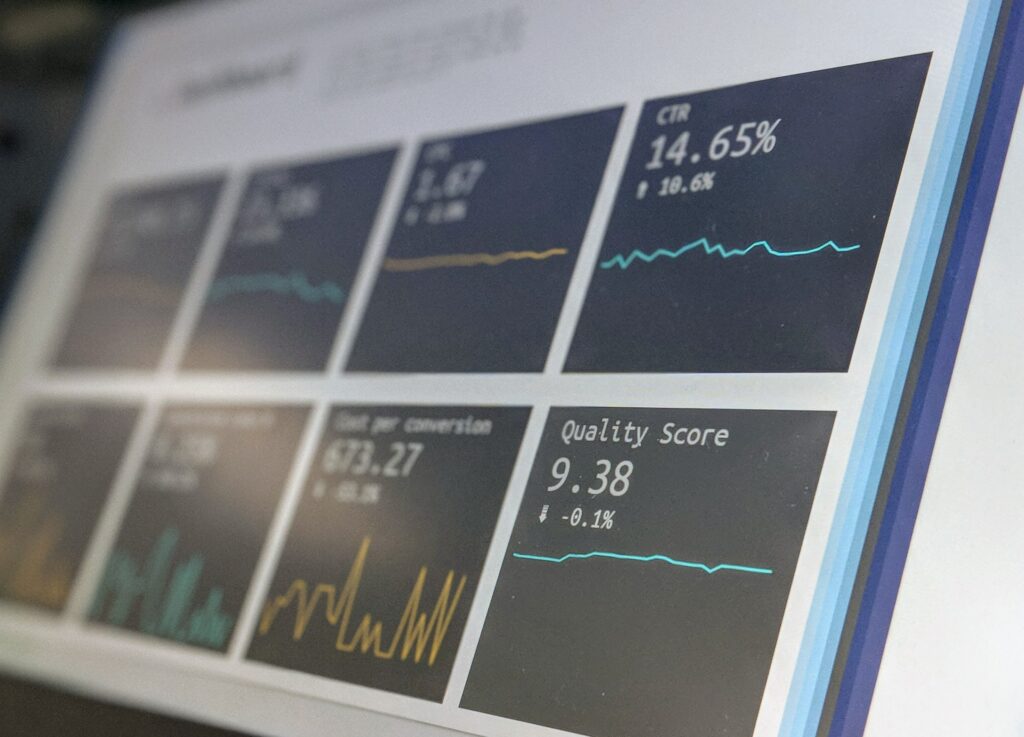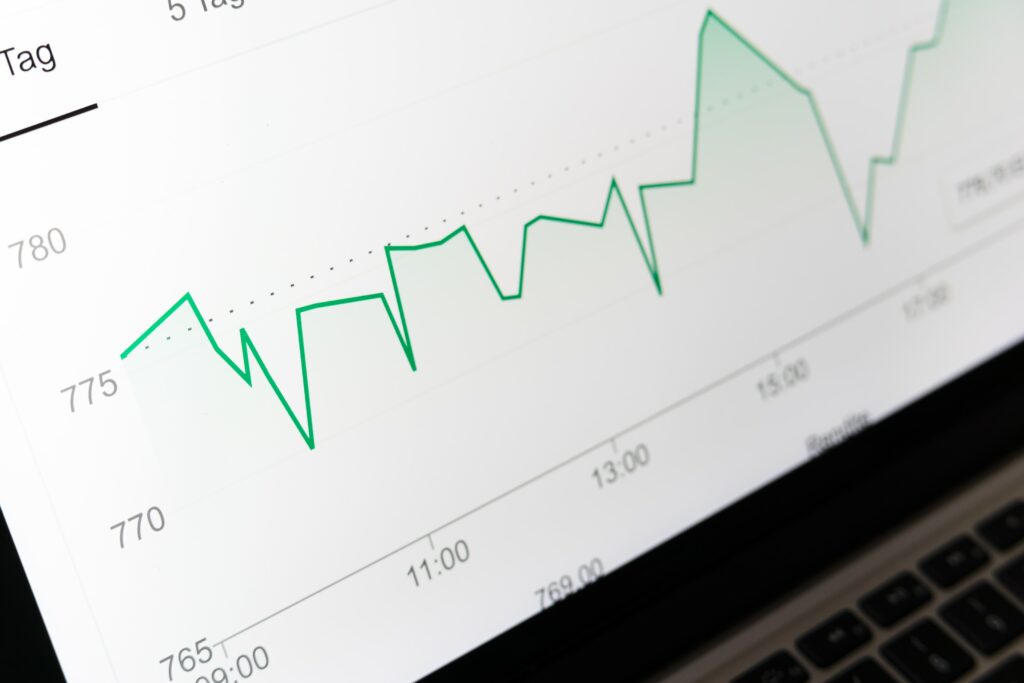What are the five most important KPIs for an online seller?
If you’re involved in ecommerce, it’s key for you to be constantly evaluating your own performance. Unless you take a critical approach to your own business, you may find that your competitors end up passing you up. Taking a long, hard look at what you’re doing right and wrong will give you a sense of what should stay the same and what should change.
But doing that isn’t as easy as it sounds. Knowing what aspects of your business to focus on evaluating is difficult. Should you only look at sales? What about revenue on a monthly basis? There are so many moving pieces that go into running an online store that it can feel really challenging to know where to start looking for improvements.
Luckily, that’s where KPIs come in. Also known as key performance indicators, there are metrics that are generally agreed upon to be the most important indicators of whether your business is doing well or not. For an online seller – particularly one who works independently or without much outside help – looking at KPIs is something that should be done frequently to determine what areas of the business need to be improved.
While there is some debate around what KPIs are worth looking at, there are five that stand above the rest as being the most important for online sellers. In this article, we’ll go over those five. We’ll discuss what the KPI is, the importance of it, and how to analyze your own. Let’s take a look.
Conversion Rate
If you’re in the business of ecommerce, your ultimate goal is to sell products. It doesn’t matter what those products are; if you aren’t selling things, you aren’t finding success. But sometimes simply making sales isn’t the only sign that you are doing well. In fact, sales can actually be somewhat misleading.
Think about it this way. If you’re making 100 sales a month, you might be feeling pretty good depending on the size of your business. But the nature of the Internet means that you don’t witness every single person that “walks into” your shop. Those 100 sales might sound good, but it’s far less impressive if you have 1,000,000 visitors to your website every month. In that case, only 1 out of every 10,000 customers actually ends up buying anything from you. That’s a whole lot of missed opportunities.
That’s why looking at your conversion rate KPI is such an important thing to do. It should give you a sense of how many sales you are actually making relative to how many customers you could be potentially selling to. While the number of sales that defines “success” will vary depending on the size of a business, a good conversion rate is something that is steady across the board. Whether you’re a giant shop or a tiny startup, you’ll generally be aiming for the same level of conversion rate.
Before we get to the kind of conversion rate that you should be targeting, though, it’s worthwhile to define how you actually calculate your own conversion rate. To find your most basic conversion rate, you simply need to divide the number of sales you make by the number of visitors to your website. Once you do that, multiply the number by 100%. The number you have will then be the percentage of visitors to your site that actually end up buying anything – in other words, it will be your conversion rate.
But for shops that have different kinds of conversions that they are aiming for, it can be worthwhile to segment your conversion rate. For instance, a shop might sell products as well as a membership service. Calculating separate conversion rates for the inventory and the membership service can give much greater insight to what’s actually going on with your sales approaches than if you calculated them together.
Regardless of how you want to do it, the end goal is the same: find your desired conversion rate and decide whether or not it needs to be improved. In all likelihood, you will discover that your conversion rate it’s nearly as high as you would like it to be. That just signifies that it’s time to hit the drawing board and come up with some innovative ideas to increase the number of sales that you make.
But you’re probably still wondering: what conversion rate should you aim for? Because it’s expressed via a specific percentage, you might be thinking that you can shoot for a conversion rate and then just call it a day. Well, it depends on what niche your shop is in. For instance, a store selling expensive luxury goods can be perfectly happy with a lower conversion rate than a shop with a much smaller profit margin on every sale.
To help give you an understanding of what a conversion rate might look like in your industry, though, here are some median conversion rates across a few different niches. Real estate is as low as 2.2%, insurance is 4.5%, and food and restaurants are up at 6.1%. For the entirety of the ecommerce world, the median conversion rate is 3.5%.
So, yes, median conversion rates are generally pretty low. But to discover exactly what yours should be, do some research into this specific KPI for your industry. Once you have that number, calculate your own conversion rate and make a comparison. It should be clear whether there is a problem or not once you do this.
If you do find that your conversion rate is low, you’ll need to find a good way to increase it. There are plenty of ways to do this: optimizing the customer experience, making your website easier to navigate, and making sure your copywriting and photos are top notch. Get creative and find a way to close those sales!
Shopping Cart Abandonment
Ecommerce is very different from brick-and-mortar stores in a lot of ways. But there are also plenty of ways in which shopping online and shopping in a store are very similar. For instance, customers expect many of the same things, such as personalized help and ease of navigation, with both experiences.
Beyond this, the same shopper habits appear both in real life and online. The main habit that sellers should be paying attention to is shopping cart abandonment. Just like how potential customers will walk into a shop, browse, and then walk out, they will load up online stores, take a look, put things in their cart, and then close the window without buying anything.
This is important because it’s the closest a shopper can get to buying something without actually making a purchase. If they put it in their cart, they are signaling that they are interested enough in it to move from just thinking about buying it to being on their way to buying it. If they end up abandoning their cart, that means that something happened along the way that made them change their mind. If you can identify the factor that is making them log off without buying, you can turn shopping cart abandonments into sales in the future.
Of course, that brings up an important question. How exactly do you figure out who is abandoning their carts? And on top of that, how do you then figure out why they decided not to buy anything?
Let’s answer the first question. The main way that people go about finding out who is abandoning their shopping carts is by using plug-ins or other software that keeps track of this for you. Most platforms allow you to silently track when a shopper gives up on a purchase, and you can take a look at this data whenever you’re trying to make improvements to your shop.
Sometimes you don’t even need to do that, though. Many sellers opt to just figure out their cart abandonment rate as a whole rather than trying to deal with looking at every customer individually. The way to do this is pretty simple: you just need to divide your number of completed purchases by the number of shopping carts created. To turn it into a handy percentage, just multiply it by 100.
If you do this and get a high number, don’t be alarmed. It’s pretty normal to have a high cart abandonment rate. Different studies suggest different average percentages for this KPI, but they are generally between 65% and 75%. If yours is far higher than that, though, it may be time to find a fix.
As for figuring out why the cart was abandoned, you probably will never be able to reach out to every single lost customer and figure out what made them change their mind. Not only is that an unrealistic amount of work, but no shopper wants to get spammed with a random email asking why they didn’t decide to do business with you. What you can do instead, though, is target the usual areas that cause potential buyers to lose interest and proactively address them to improve your cart abandonment rate.
One of the main factors that leads to someone abandoning a shopping cart is if the checkout process ends up being too complicated. If they need to input endless information just to make a purchase, they might give up out of sheer frustration. That’s why it’s great to incorporate quick payment options like Paypal that allow shoppers to be done with the whole process in just a click or two.
Another reason why someone might choose to not buy something that’s in their cart is if their purchase ends up being more expensive than they imagined. If you have hidden fees or high shipping costs, buyers might be turned off when they see that their total is much more than they guessed based on the initial price of the item. To avoid this, simply try to be as transparent as possible about what they will be paying before they make it to the final checkout phase.
Both of these issues, as well as plenty more, contribute to a high cart abandonment rate. And if you want to lower yours, it would be wise to do everything in your power to make the checkout process as smooth and painless as possible.
Average Order Value
The two KPIs we discussed above are mainly about individual shoppers and whether or not you get them to buy something. Now let’s imagine for a second that everyone who comes to your website ends up purchasing something. That’s great! But there’s a new factor to consider: what, exactly, are they buying? Are they buying the cheapest item possible? What about the most expensive item? Are they buying multiple things at once?
This idea of what the customer is buying is expressed in the KPI of the average order value. It basically takes all of the orders that you receive and says, “This is the amount that your average customer spends when they buy something from you.” Having a high average order value is good, and having a low average order value is bad. It’s a pretty simple concept, but it has a lot of implications for ecommerce businesses.
First of all, let’s talk about actually finding out what your average order value is. Much like these other KPIs, it’s pretty simple to calculate. Just take your total revenue and divide it by your number of orders. If you’ve made $10,000 across 100 orders, you know that each customer is spending an average of $100.
Of course, you may want to be more specific about how you think about average order value. It can be worth breaking this KPI down on a monthly basis. This will help you see if your average order value goes up or down depending on the season. You can even get more specific by looking at your average order value in the weeks surrounding a major holiday to see if your business is fully capitalizing on spending trends.
Some larger businesses will even opt to calculate their average order value on a daily basis. This will give you very specific information, but it can be hard to pick out the trends when you are looking at this closely. Still, it’s a good idea to have in your back pocket if you want some very deep analysis.
One thing to keep in mind when calculating your average order value is that, much like any other set of data that is averaged, it can be misleading. If you have a few orders that are outliers, it can skew your average order value towards a figure that doesn’t really capture your “average” customer. It can be worth eliminating major outliers from your calculation if you are worried about this.
So what kind of average order value should you be aiming for? Well, much like many other ecommerce KPIs, it depends on what industry you are serving. In general, though, research suggests that a typical average order value for an online shop is somewhere in the realm of $78. You can expect this to be slightly lower or higher depending on what kind of items that you sell, but it’s a good benchmark for most businesses.
If you take a look at your average order value and find that it’s lower than $78 – or whatever number you think is the goal for your shop – there are plenty of things that you can do. Raising your average order value requires you to be a bit creative, though. Keep in mind that you aren’t just trying to sell more; you’re trying to get each individual customer to buy more than they were before.
One of the classic ways of doing this is encouraging customers to buy bundles of items rather than only one. Offering free shipping if the customer crosses a certain price threshold will go a long way towards getting them to buy more. Other methods such as suggesting similar products that customers often buy together can also make customers realize that they might as well buy more.
Finally, you may want to consider incorporating some type of upselling into your shop. In other words, you should try to encourage customers to buy a fancier, more expensive version of an item that they are considering getting. This is a tried-and-true method for increasing your average order value, and it can also help customers feel satisfied that they are getting the best possible version of a certain item.
Revenue on Advertising Spend
In ecommerce, advertising really is everything. Well, advertising and SEO. If you want people to shop at your store, you need them to actually know that it exists first. The money you put into your ad campaigns will ideally come directly back to you in the form of new and returning customers. In fact, advertising is one of the key things that you should be investing in as you grow your business.
However, marketing isn’t a one-and-done kind of thing. Online sellers will often start a campaign, find that it’s ineffective, and then tweak it before trying it out again. This trial-and-error process can really help refine your marketing vision, and it can also help you respond to changing trends in advertising and customer preferences. In short, you constantly need to be reevaluating and innovating your own ads.
There is one major KPI that you should be paying attention to when it comes to your ads, and that’s revenue on advertising spend. This metric is one of the most important to look at when evaluating how effective your ads are. If you find that your revenue on advertising spend is low, it means that your ads aren’t doing what they should be doing. If you find that it’s high, it means that you are doing something right and your ads are bringing in tons of business for you.
In essence, revenue on advertising spend is exactly what it sounds like. It’s an expression of how much money your ads are bringing in versus how much money you’ve spent on your ads. That may sound like a simplification, but it’s actually very true. It’s also exactly how you calculate revenue on advertising spend. You simply take the amount of revenue that an ad campaign brought in and divide it by the amount you spent.
Of course, that means that you’ll need to have accurate figures for how much revenue your ads brought in. Luckily, most online ad campaigns allow you to see how much business they brought to your shop. Using this data, it should be quite easy to calculate this KPI and begin comparing it to industry standards.
Like all other KPIs, your ideal figure for revenue on advertising spend will change slightly depending on what sector you are in. But it’s generally considered standard to aim for your revenue on advertising spend to come out to around 4. That means that you should expect the money spent on an ad campaign to result in 4 times as much revenue back to you.
If you calculate this KPI and find that yours is lower than 4, you may want to start editing your ads to make them more effective. Of course, this isn’t an easy task. Once you break it down, there are three main ways of doing this: lowering the cost of each click that an ad generates; converting more sales per click on the ad; increasing how much is spent with each sale from the ad.
Using advanced analytics can help you see which of these areas you are lagging behind in. Increasing even just one of those three can make a big difference in this KPI. And, if all else fails, you can try just starting a brand new ad campaign to see if it’s much more effective.
Customer Lifetime Value
Here’s a question for you. Which one of these customers would you rather have:
Customer A: They make one big purchase that adds up to $1000… and they never shop with you again.
or Customer B: They always make small purchases of around $30, but they buy from you every month for years and years.
The answer is, of course, Customer B. From a purely financial standpoint, this customer will provide much more money in the long run. 12 $30 purchases every year adds up to $360 per year. It would only take three years for them to provide you with more revenue than Customer A. It’s just simply arithmetic.
The idea that not all customers will provide you with the same value in the long term is expressed by the KPI customer lifetime value. It’s the amount of revenue that one customer will bring you throughout their entire life, and it’s critical to pay attention to it. But it’s actually more complicated than just the amount of revenue that they will bring in.
For starters, getting new customers costs money. To convince someone that has never shopped with you before to do so, you need to invest money into advertising. If we revisit the example above, five Customer As still bring in less money than five Customer Bs. But if you factor in the fact that each Customer A costs money to bring to your store, five Customer As might even bring in less net revenue than three or four Customer Bs. Having a lifelong, dedicated customer is incredibly powerful in this sense.
There’s another reason why opting for Customer B is important. Customer B will actively support your business. They’ll read your blog, they’ll share your sale with their friends, and they’ll follow you on Instagram. A customer that buys one thing and then disappears only helps you once. A customer that continually buys from you is far more likely to support you again and again in a variety of different ways.
So with that in mind, how do you find out if someone is a Customer A or a Customer B? How do you figure out a customer’s lifetime value?
Well, it’s not really as simple as the other KPIs in this list. For any customer, you can calculate this KPI by multiplying their customer value by their customer lifespan. Their customer value can be found by multiplying their average purchase value by their number of purchases.
Of course, those are difficult metrics to figure out for an individual. It would take forever to do this with all of your customers, and it doesn’t even really make sense to. In fact, it may be impossible to calculate this for each of your shoppers depending on what kind of analytics you have access to.
Instead, you can use your average numbers for this calculation. If you multiply your average customer value by the average customer lifespan, you’ll have the customer lifetime value of your average customer. This will then give you a sense of whether your customers are loyal and valuable in the long term or fickle and only valuable in the short term.
This may sound like a vague conclusion to arrive at, but there’s a lot of actionable insight you can derive from this. If you find that your average customer buys things once and then never returns, you can take lots of actions to make them return again. This can include email campaigns, SMS messaging, and sales that target past customers. Anything to turn a one-time buyer into a returning customer will increase your average customer lifetime value.
At the end of the day, long lasting relationships are more rewarding for both customers and sellers. Your goal should be to take action to develop these relationships even if you haven’t yet calculated your customer lifetime value. Still, figuring out what this KPI looks for you will give you a good idea of whether investing money into this metric is urgent or not.













